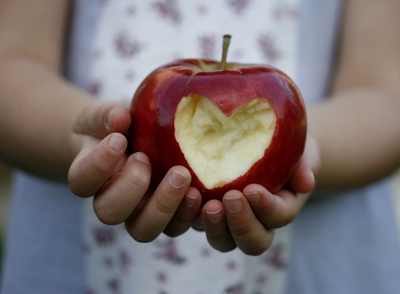Junior MasterChef Inspires School Holiday Fun in the Kitchen

Junior MasterChef Inspires School Holiday Fun in the Kitchen
The popularity of Junior Masterchef has inspired kids to get creative in the kitchen with healthy alternatives to the traditional kids' recipes of cup cakes and cookies, according to award winning Brisbane dietitian, Trudy Williams, and author of, "this=that child size: a life-size photo guide to kids' food serves".Ms Williams - who is an Accredited Practising Dietitian and Accredited Nutritionist - encourages parents and grandparents to use the holidays and weekends to help children develop a healthy interest in food, whether it be in the kitchen cooking or out in the garden planting herbs and summer vegetables.
There are close to 170 days a year when the kids are not in school - with weekends and holidays included. However, work weary parents are reluctant to give their kids free-run of the kitchen, with visions of their youngsters mimicking Junior Masterchefs, floundering in flour and presenting burnt offerings dished up for dinner.
"The kitchen should be a fun place of learning and experimenting for children, hopefully with the aim of developing their interest in many different types of healthy food and ways to prepare it," she said.
To help avoid accidents and maximise hours of safe school holiday and weekend enjoyment, Ms Williams offers these tips:
1.Match your child's age to the recipe and be realistic about what your child can manage. For example, start the very young ones with safe and messy tasks such as mixing, simple measuring, tearing, shaping and kneading. All cutting and hot area work is the parent's domain. Set the littlies up at the dining table away from the stove and oven. Graduate them to assembly, layering and wrapping. Perfect for getting the little ones involved in some way are simple scones, savoury scrolls, french toast, layered fruit and custard desserts, torn salad leaves, tortillas and roll-up wraps.
2.Use sleep-overs to allow tweens to shine, and give them a unique night-time activity, but guide the menu plan to keep things simple and stress-free for you. M-Y-O pizza is perfect and popular - it can be gourmet or simple. And even the fussiest kids will make something they will eat. To keep it healthy, supply small bowls of cooked chicken pieces, seafood, lean ham or sliced bacon eyes (not the ready-diced bacon), mushroom, marinated eggplant, capsicum, olives, mozzarella or bococcini circles, pre-baked potato circles, and tomato paste or pesto. Let the kids create their own pizza. Keep it no-fuss. Throw a picnic rug on the floor, place a big leafy salad in the middle and keep the pizzas pumping out from the kitchen. Very hot ovens + hungry, distracted kids don't always combine too well, so you may want to do the final cooking or closely watch the cooking and use of oven-mitts.
3.Set up rehearsals for a 'kids night to cook', aka Junior Masterchef style. Practice on weekends together to find a signature dish that your child is proud of and will want to cook on their night in the kitchen, and importantly something that everyone else in the house will be happy to eat as well. Whether it's fritatta, rice cooker risotto, mexican burrito, omelette, stir fry, a traditional roast or something more fiddly, keep the foundation ingredients fresh, wholesome and simple.
4. Set some rules about what goes into the kids' creations. Main meals are to include at least four different vegetables (cooked or salad), all meats must be trimmed of excess fat, and a dash of oil is fine but aim to keep deep-frying off-limits. If vegetarian, then include eggs, legumes or lentils, tofu or a not-meat 'meat'. Grains such as rice, pasta, noodles and breads are fine additions, but forget fancy pastry parcels and pies. The basic ingredients when combined with your child's choice of herbs, spices and flavouring transform into both simple or more challenging dishes depending on their skill and interest - Thai noodles, fried rice, kebabs in wrapbread, burgers, wild rice salad, curry and naan. Desserts will feature fruit - fresh, canned or dried.
5. Arrange a 'cook-off' with friends. Supply five ingredients and get the kids to work in a group. Have a menu board up with some ideas for inspiration to help them get started or provide a few recipes to choose from. The finished creation is their meal.
Ms Williams suggests parents always supervise their kids in the kitchen.
"The kitchen is a very dangerous place. The risk of burns from open gas flames, red hotplates, boiling liquids, hot pans, and ignition ready spray oil is ever present. Climbing a chair to reach the microwave or see the stove-top is a recipe for disaster, as are pot handles pointing towards the child," she said.
However, Ms Williams insists that a safe cooking adventure can never-the-less provide a valuable school holiday experience.
"While you're there, the conversations will flow, love will be shared and your child will learn some essential skills. The kitchen is a wonderful place to share more than just food."
Image from: Clare Bloomfield's portfolio
www.kidsfoodtalk.com.au
Buy it now at
MORE



